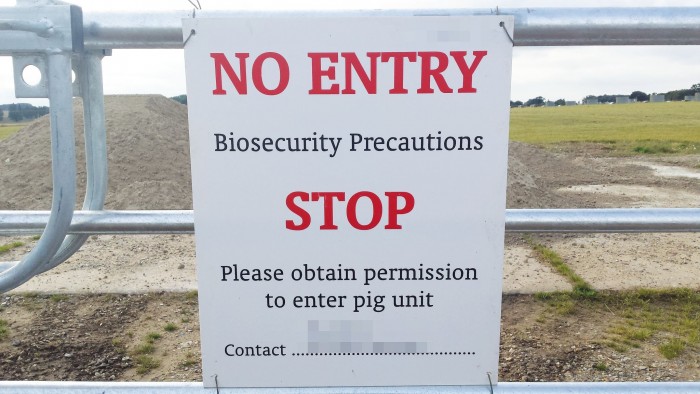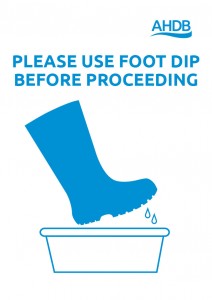The increasing threat of African swine fever (ASF), reflected in the Government’s changed UK risk status, has put a fresh spotlight on measures being taken on farms to keep the virus away from pigs should it enter the UK, as is more and more likely.
NPA senior policy adviser Rebecca Veale stressed that the recent movements of the virus in Europe must serve as a wake-up call to producers, as well as Government. “It only takes one slip to make this challenging time significantly worse,” she said.
With that in mind, the NPA, AHDB and Pig Veterinary Society (PVS) have put together a checklist, which will be available on a new page on the AHDB website.
“There is lots of biosecurity advice out there, and we’ve brought it all together to provide a comprehensive and visible checklist for farms – sometimes a reminder makes you realise something has slipped.
“The last two years have put increasing pressure on producers and their staff so it’s understandable if some complacency has crept in,” Ms Veale said.
“Sometimes, it is just about the simple things that people haven’t thought about for a long time, like an extra gate, or lines on the floor or signage to clearly de-mark areas.
“We want people to understand that the risk has increased and look at things with a fresh pair of eyes, challenge staff to think about how you could make something more biosecure and to generally up your game.
“We continue to lobby on national biosecurity and to communicate the risks of potential ASF spread more widely, for instance to seasonal horticulture workers.”
YOUR BIOSECURITY CHECKLIST
 Biosecurity isn’t exciting but anyone and anything can walk disease in and out of your unit, so it’s our best defence. This is a checklist to remind yourself and your team of the simple things which could keep disease away from your pigs.
Biosecurity isn’t exciting but anyone and anything can walk disease in and out of your unit, so it’s our best defence. This is a checklist to remind yourself and your team of the simple things which could keep disease away from your pigs.
People
- Have a visitor policy and stick to it (you can say no!).
- Record everyone on and off the unit.
- Look at people flow – can you put in showers or create a Danish/barrier entrance?
- Make barriers where you want people to change PPE or stop and add signs telling them what you want them to do.
- Keep PPE well stocked where you need it.
- Strict policy for pig contact and movement between units to limit cross contamination – remind your regular visitors and don’t be afraid to point out the obvious to those less experienced (many contractors won’t know that pork onsite is not permitted).
- Extra vigilance for people that have visited travelled overseas recently.
Pigs
- Source knowing the health status of your herd and the pigs coming in.
- Quarantine.
- Keep records!
- Organise the flow to keep groups separate and minimise contact with visitors.
Vehicles
- Have a designated parking area outside the biosecure area.
- Make sure your signs and gates stop vehicles where you want them to.
- Provide cleansing and disinfection materials for vehicles (including your own!).
- Don’t forget #MuckFreeTruck – cleanse and disinfect vehicles between units.
- Keep the parking area clean.
- Check delivery vehicles, including the cab (it should be clean).
- Look at which vehicles come onto the unit and explore if you could take deliveries etc. further away from pigs.
Vectors of disease
- Deter birds and wildlife.
- Keep on top of vermin control.
- Zero pigmeat policy and make it known to all people on your unit.
- Make sure all suppliers of product to your unit(s) are aware of your biosecurity policies.
Equipment
- Keep it clean.
- Have a rota for checking (fresh eyes might spot something missed by others).
- Limit any sharing of equipment wherever possible.
Footpaths
- Put notices up – check out the AHDB resources.
- Make people are aware of the risk they pose.
- Check perimeter fencing regularly.
- Apply to reroute footpaths (not a quick change but can be worthwhile).
More information on ASF and downloadable resources, such as useful signs, are available on the AHDB website HERE






